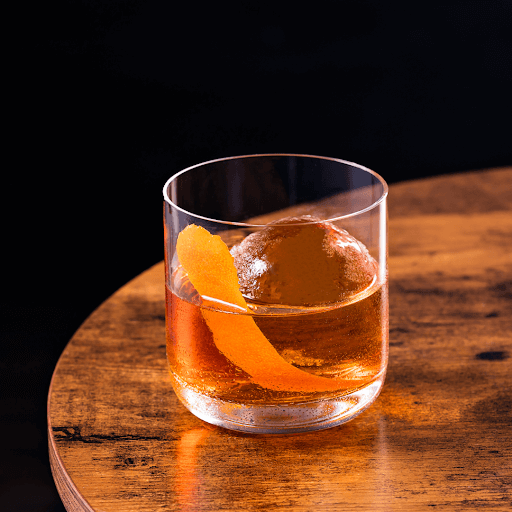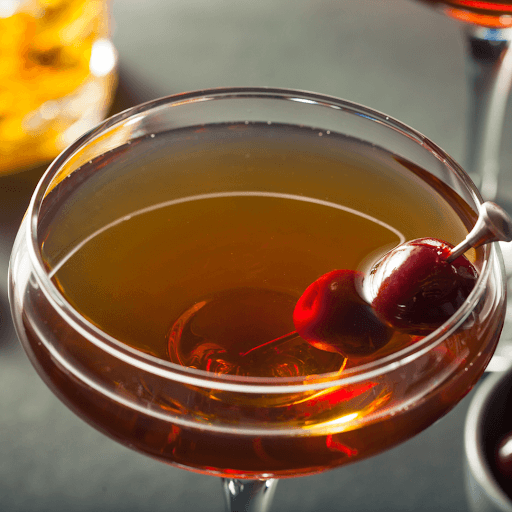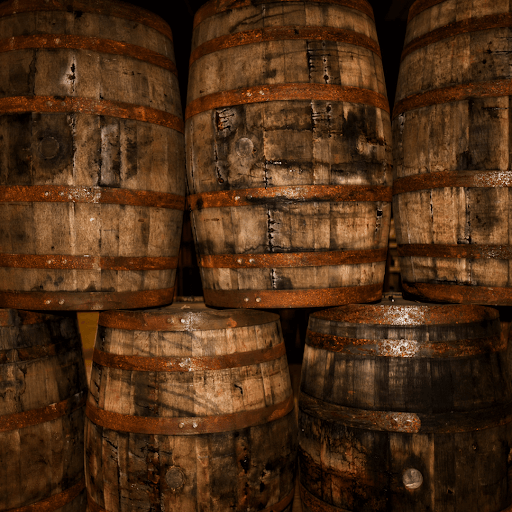Hey there, whiskey enthusiasts!
Oh, and hello, curious sippers!
As someone who works in hospitality marketing, I overhear a lot of conversations.
At Newport Protective Club, I often hear people chatting about what they should order.
I also overhear a lot of questions about different liquors, what they taste like, and what they go well with.
One of the most common questions we get at the bar, is “What’s the difference between bourbon and rye whiskey?”
Today, I’m diving into the world of American whiskey, focusing on two of its most celebrated varieties: bourbon and rye.
While both fall under the big umbrella of American whiskey, each brings its own unique flair to the table.
Or should I say bar?
Bourbon, known for its signature sweetness and smooth finish, often steals the spotlight with its rich, velvety charm.
On the other hand, rye whiskey packs a spicier punch, with bold flavors and a robust profile that can really shake up your taste buds
So, whether you’re a seasoned whiskey lover or just starting to explore options, stick around as I break down what makes each of these whiskeys stand out and why they both deserve a spot on your shelf.
The History of Whiskey
Whiskey’s journey through American history is a rich one. First, let’s rewind to the early days.
Bourbon got its name from Bourbon County, Kentucky, a region that became legendary for distilling corn into golden, delicious whiskey.
Moving north, early American colonists were busy putting rye to good use, distilling the grain that thrived in cooler climates into bold and fiery rye whiskey.
Fast forward to today, and U.S. regulations have set strict rules to keep these traditions alive and well. For a whiskey to earn the title of “bourbon,” it needs at least 51% corn in its mash bill and must age in new charred oak barrels, giving it that classic, caramel sweetness.
Rye whiskey, on the other hand, must contain at least 51% rye, offering up those spicy and robust flavors. These guidelines don’t just help maintain quality; they protect a heritage that pours from every bottle.
Understanding the Mash Bill
Let’s take a closer look at what really sets bourbon and rye whiskey apart—their mash bills.
The grain mash is essentially the recipe that dictates the fundamental flavors of these spirits.
For bourbon, the grain mash must contain at least 51% corn, which is the secret behind the signature sweetness of bourbon that we all enjoy. It lends a smooth, subtly sweet base that makes bourbon so approachable and beloved
Moving over to rye whiskey, its grain mash demands at least 51% rye grain, which is responsible for delivering those robust, spicy notes. This gives rye whiskey a spicier flavor, offering a sharper, more invigorating taste that can really wake up your palate. Whether you’re a fan of bourbon’s sweetness or the bold spice of rye, it’s the grain mash that makes all the difference.

Distillation and Aging Process
When it comes to crafting the distinct tastes of bourbon and rye whiskey, the aging process plays a huge role.
Both straight bourbon and straight rye whiskey are aged in new American oak barrels, which are never reused. These wooden casks do more than just hold the spirit; they’re an integral part of the flavor development.
As the whiskey matures in these new oak barrels, it absorbs the wood’s natural sugars and tannins, gaining color, depth, and character. This interaction creates the unique flavor profile that whiskey enthusiasts cherish—giving bourbon its rich, caramel notes and rye whiskey its bold, spicy complexity.
The rules around aging these whiskeys are quite strict, too. Straight bourbon and straight rye whiskey must meet minimum aging requirements that are not demanded of other types of whiskey. For example, Tennessee whiskey, which also uses new oak barrels, goes through an additional charcoal filtering process known as the Lincoln County Process, giving it a smoother profile.
Meanwhile, Canadian whisky, which often blends multiple grain spirits, might use a mix of new or reused barrels, leading to a lighter and typically less complex flavor profile. This diverse approach to aging across different types of whiskey highlights how crucial those years in the barrel are to the spirit’s final taste.
Flavor Profiles and Key Differences
The key difference between bourbon and rye whiskey really comes down to the flavor profiles that define each type. Bourbon is well-loved for its inherent sweetness, a result of the high corn content in its mash bill. This sweetness often manifests as rich, caramel and vanilla notes that make bourbon such a smooth sipper. Rye whiskey, in contrast, is known for its herbal notes, offering a more complex and spicy flavor that can add an intriguing layer to cocktails or stand strong on its own.
For those who enjoy a twist on the classic, high-rye bourbon introduces extra rye content to the bourbon’s mash bill, which not only enhances the spiciness but also provides a more dynamic mouth feel. This makes high-rye bourbon a less sweet counterpart to traditional bourbons, appealing to those who prefer a bit more boldness in their glass.
On an international note, Canadian rye whiskey often showcases a different character from American rye whiskey. Due to looser regulations regarding the percentage of rye in the mash bill, Canadian rye whiskey might not always carry the same spicy punch and can sometimes include a blend of other grains, leading to a more varied flavor profile that can range from smooth and mild to rich and robust, depending on the brand and the specific production methods used.

Popular Cocktails
Bourbon and rye whiskey have not only carved out a niche for themselves in the world of spirits but have also become fundamental to the creation of some of the most classic cocktails we know and love today.
The Mint Julep and Whiskey Sour, for example, showcase bourbon’s versatility and sweetness. The Mint Julep, a Southern staple especially popular at the Kentucky Derby, leverages bourbon’s sweetness to balance the fresh mint, while the Whiskey Sour uses bourbon’s rich flavor to complement the tartness of lemon juice, creating a nice, balanced drink.
On the rye side, the Old Fashioned stands as a testament to the type of whiskey’s robust and spicy profile. Rye whiskey’s herbal notes and boldness provide a complex base that pairs wonderfully with the bitters and sugar, enhancing the drink’s depth and making it a perennial favorite among whiskey aficionados.
Furthermore, iconic brands like Wild Turkey, Jim Beam, and Woodford Reserve have played pivotal roles in both popularizing and maintaining the rich traditions of bourbon and rye whiskey. These brands have become synonymous with quality and heritage, continuously influencing the landscape of American whiskey.
Cocktails Made with Bourbon:
- Mint Julep: A refreshing mix of bourbon, fresh mint, sugar, and crushed ice, traditionally served at the Kentucky Derby.
- Whiskey Sour: Combines bourbon, lemon juice, a touch of sugar, and sometimes an egg white for smoothness.
- Old Fashioned: Made with bourbon, bitters, sugar, and a twist of citrus rind.
- Boulevardier: A sophisticated blend of bourbon, sweet vermouth, and Campari.
- Kentucky Mule: A Southern twist on the Moscow mule, featuring bourbon, ginger beer, and lime.
Cocktails Made with Rye Whiskey:
- Old Fashioned: Often made with rye for those who prefer a spicier, more robust base.
- Manhattan: A classic cocktail that combines rye whiskey with sweet vermouth and bitters.
- Sazerac: One of America’s oldest cocktails, using rye whiskey, absinthe, a sugar cube, and bitters.
- Whiskey Sour: Rye can also be used in a whiskey sour for a spicier take on this classic cocktail.
- Toronto: A rye whiskey cocktail sweetened with Fernet Branca and simple syrup for a unique herbal flavor.
Each of these cocktails enhances the distinctive characteristics of bourbon or rye whiskey, making them perfect for different occasions and preferences.
FAQs for Bourbon and Rye Whiskey
- What is the best way to enjoy rye vs bourbon?
- Bourbon is often enjoyed neat or with a splash of water to open up its sweet, full flavors. It’s also popular in sweeter cocktails like the Mint Julep or a Whiskey Sour.
- Rye whiskey, with its spicier and more robust flavor profile, is fantastic in cocktails like the Manhattan or an Old Fashioned, where its boldness complements the other ingredients beautifully.
- What are the percent ABV levels typically found in these whiskeys?
- Both bourbon and rye whiskey typically range from 40% to 50% ABV (Alcohol by Volume). Cask strength versions can be higher, often between 55% and 65% ABV, offering a richer and more intense experience.
- How does the Lincoln County Process differ from the standard production processes?
- The Lincoln County Process is a distinctive step used primarily in the production of Tennessee whiskey, not typically associated with most bourbons or rye whiskeys. It involves filtering the spirit through a thick layer of maple charcoal before aging, which smooths out the flavors and gives Tennessee whiskey its unique character.
- Can bourbon only be made in Kentucky?
- While Kentucky is famous for its bourbon production due to its ideal natural conditions and historical significance, bourbon can be made anywhere in the United States as long as it adheres to the legal requirements set by the federal government.
- What makes Canadian rye whiskey different from American rye whiskey?
- Canadian rye whiskey often has a more flexible definition and may not always contain a high percentage of rye in its mash bill. It can be lighter and smoother, whereas American rye whiskey must contain at least 51% rye, giving it a distinctly spicier and bolder flavor.
- Why is rye whiskey considered spicier than bourbon?
- Rye grain naturally imparts a spicier, more peppery flavor profile compared to the sweet and often mellow flavors derived from the corn used in bourbon. This makes rye whiskey especially popular for those seeking a whiskey with a bite.
- What are some emerging trends in bourbon and rye whiskey production?
- Recent trends include experimenting with different types of barrels for aging, such as using previously used wine, rum, or beer barrels, which impart additional flavors and complexities to the whiskey. Additionally, there’s a growing interest in small-batch and craft productions that focus on unique flavor profiles and artisanal techniques.
There you have it, a full download on the difference between bourbon and rye! Got any more questions? Drop ‘em in the comments. I’m here to help!

